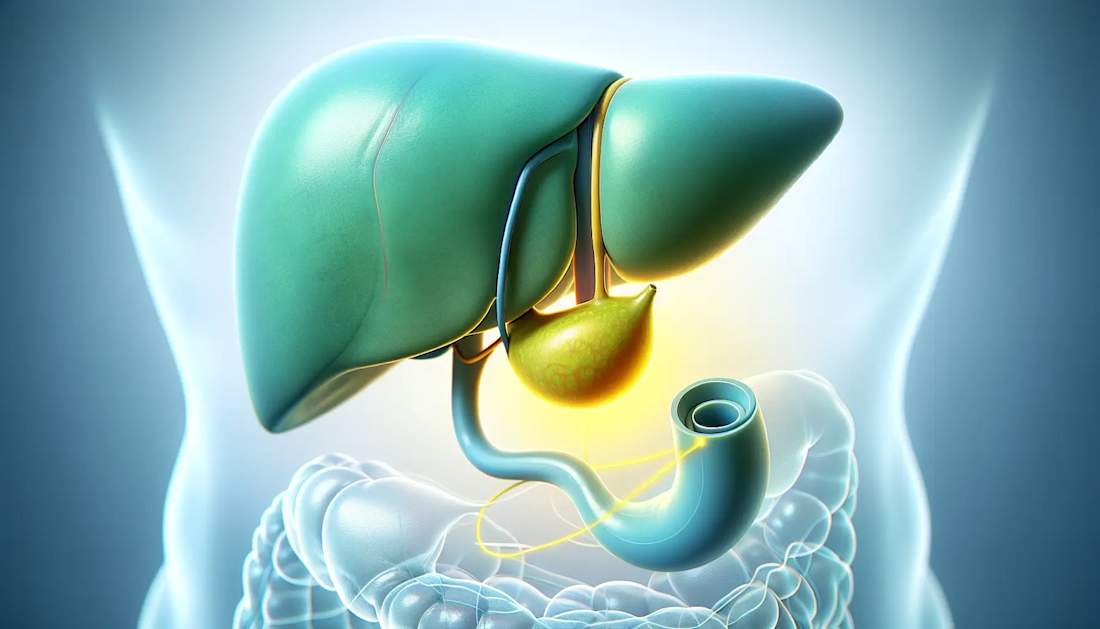Preparing for Gallbladder Surgery: What You Need to Know


When you’re preparing for gallbladder surgery, knowing what to expect and how to get ready is extremely important. This article is your practical guide – what to discuss with your doctor, how to manage your diet and medications, and the key stages of the surgery and recovery process. Here you’ll find the advice you need to face your procedure with peace of mind and your body in optimal condition. We'll cover the essentials to help you smoothly navigate through your surgery and recovery journey.
Key Takeaways
A cholecystectomy is performed to remove the gallbladder, typically due to gallstones, inflammation, or dysfunction, with either laparoscopic or open surgery methods based on the patient’s condition and the surgeon’s assessment.
Pre-surgery preparations include a comprehensive consultation, medication adjustments, dietary changes, and fasting; post-surgery procedures involve recovery monitoring, pain management, and a specific period for hospital stay and resumption of normal activities.
It’s important to recognize the risks and potential complications of gallbladder surgery, to take proper care at home post-discharge, and programs like Ready Set Recover can aid in preparation and recovery from the surgery.
What to Know About Preparing for Gallbladder Surgery
The gallbladder is a small, pear-shaped organ located under your liver. Its job is to store bile—a digestive fluid made by the liver that helps break down fats when you eat. Sometimes, gallstones form inside the gallbladder and block the flow of bile, leading to pain, especially after meals. This condition is the most common reason for gallbladder removal, known as cholecystectomy. In some cases, gallstones may pass into the bile ducts. If this happens, a special endoscopic procedure might be done before surgery to remove them. If stones are found during the surgery itself, your surgeon may place a temporary drain through a small incision to help prevent complications. This drain typically stays in place for a couple of weeks, and an x-ray is later performed to confirm that all stones have been cleared before it’s removed. Understanding how gallbladder surgery works—and what might happen before, during, and after—can help you feel more confident and better prepared.
Other conditions that might necessitate the surgery include infection or inflammation of the gallbladder, or gallbladder dysfunction without stones as the cause.
A typical laparoscopic cholecystectomy procedure involves:
Making multiple small incisions in your abdomen while you are under general anesthesia.
Inserting a tiny video camera and special surgical tools through these incisions to remove the gallbladder.
Occasionally taking an x-ray before removing the gallbladder to check for gallstones in the bile duct.
Types of Gallbladder Removal Procedures

When it comes to gallbladder surgery, there are two main types: laparoscopic cholecystectomy and open cholecystectomy. Laparoscopic cholecystectomy is a minimally invasive procedure where small incisions are made in your abdomen, through which a laparoscope (a tiny video camera) and other surgical tools are inserted. The gallbladder is then detached and removed. This procedure is less painful, has a lower risk of complications, and allows for faster recovery compared to open surgery.
On the other hand, open cholecystectomy involves making a larger incision in your abdomen to access and remove the gallbladder. This method is typically used when the gallbladder is severely diseased, or when complications make laparoscopic surgery unsafe. An open procedure may be necessary in cases where a patient's weight or history of prior abdominal surgery makes visualization of organs with a camera more difficult. The choice between these two methods depends on several factors, including the patient’s specific circumstances and the surgeon’s evaluation.
Initial Consultation and Physical Exam
Before you undergo gallbladder surgery, your healthcare provider will conduct a comprehensive consultation and physical exam. This procedure aids your surgeon in determining the optimal approach for your gallbladder removal, taking your overall health condition into account. This is also the time to discuss your medical history, any medications you’re taking, and any concerns you might have about the surgery. Be sure to disclose all the medicines you are taking, including over-the-counter and prescription medicines, vitamins, herbs, and other supplements.
Your surgeon’s training and experience can significantly impact the success and safety of the procedure. This includes their proficiency in conducting both laparoscopic and open gallbladder surgeries, as well as robotic surgery. A physical exam is also conducted to ascertain your fitness for surgery and to uncover any potential underlying conditions that could influence the surgical procedure or recovery.
Pre-Operative Instructions

Before you step foot in the operating room, there are a few pre-operative protocols that you must follow. For example, fasting is typically a requirement before the surgery. This is a standard procedure in most surgeries to prevent the risk of aspiration, which can lead to serious complications. Your healthcare provider will give you specific instructions on when to start fasting. Generally, you should not eat anything on the day of the procedure. This means no solid foods, milk, or non-clear liquids. You may, however, be allowed to take small sips of water up to two hours before the surgery. Remember, these instructions are crucial for your safety and the success of the procedure, so it's important to follow them closely.
Medication Management
Effective medication management prior to gallbladder surgery is important for minimizing potential risks, such as bleeding, during and post-surgery. Certain medications, like aspirin, coumadin, heparin, and other blood thinners, should be stopped before the procedure, as they can increase the risk of bleeding. If your doctor has advised you to continue taking any medications on the day of the surgery, you should take them with a small sip of water.
Be aware that extended use of blood thinners may potentially lead to complications like hemorrhage, during the surgical procedure, especially for those with bleeding disorders. This may lead to being unable to clearly visualize other abdominal organs and injury. Therefore, having a thorough discussion with your healthcare provider about your medication management prior to the surgery is imperative.
Dietary Guidelines
In addition to managing your medications, making certain dietary changes can also support a smoother recovery from gallbladder surgery. Before the surgery, it's recommended to adhere to a healthy diet that includes smaller, more frequent meals with small portions of lean protein, while avoiding fatty, greasy, processed, and sugary foods. You should start making these dietary changes at least 7-10 days before the surgery.
Bear in mind, maintaining a healthy diet aids not only in your recovery from surgery but also enhances your overall well-being. Keeping your body fueled with the right nutrients can make a significant difference in your recovery process.
The Night Before Surgery
The night before your gallbladder surgery is all about final preparations. You should bathe or shower to cleanse your body, but refrain from using lotions, perfumes, deodorants, or nail polish. It’s also crucial that you don’t try to shave the surgical site yourself, as this could increase the risk of infection. Learn more about preparing your body before surgery.
What to Wear and Bring

To ensure your comfort during your hospital stay, it’s important to plan ahead and pack appropriately. You’ll be provided with a hospital gown to wear during the procedure, but you’ll want to bring comfortable clothes for after the surgery. Some items to consider packing include:
Loose, well-fitting clothing
Comfortable underwear
Slippers or socks
Toiletries (toothbrush, toothpaste, shampoo, etc.)
Entertainment (books, magazines, electronic devices)
Personal items (glasses, contact lenses, hearing aids)
These items can provide considerable comfort, especially if there are incisions in sensitive areas or existing scar tissue.
In addition to clothing, you should also bring a few essential personal items for your comfort and convenience. This might include a toothbrush, books or magazines, and a picture ID. You can also check to see if you can bring your own pillows and blankets to make your hospital stay more comfortable.
Day of Surgery Checklist

On the day of your surgery, you can expect a sequence of events that are designed to ensure everything goes smoothly. Here's what you can expect:
Upon your arrival at the hospital, you will proceed to the pre-care area.
Here, you will change into a hospital gown and have your vital signs assessed.
After a nurse conducts an interview, you will be escorted to the operating room holding area to meet with the anesthesiologist and have an intravenous line inserted. During this time, the surgical team will be preparing for your procedure.
The anesthesiologist plays a key role in maintaining your comfort and safety throughout the procedure. You'll be administered general anesthesia, which means you’ll be unconscious and won’t feel pain during the surgery. The hospital also implements various measures to prevent infection on the day of surgery, such as rigorous hand washing, and wearing of protective gloves or masks.
In the Operating Room
Once you’re in the operating room, the surgical procedure will begin. If you’re having a laparoscopic gallbladder removal, the following steps will be taken:
Small incisions will be made in your abdomen.
A tiny video camera and special surgical tools will be inserted through these incisions to visualize the internal organs and extract the gallbladder.
This procedure is minimally invasive and typically takes less than an hour.
Occasionally X-rays during the procedure will be done
On the other hand, if you’re having an open gallbladder removal, a larger incision will be made in your abdomen to directly access and remove the gallbladder. This procedure typically takes about an hour or more. Regardless of the type of surgery you’re undergoing, rest assured that your surgical team will use a variety of instruments and techniques to ensure a successful procedure.
Post-Surgery: From Recovery Room to Discharge

After your gallbladder surgery, you’ll go through the following steps:
You’ll be taken to the recovery room, where you’ll be closely monitored until you regain consciousness.
Once you’re awake, you’ll be moved to a hospital room.
If a nasogastric tube was inserted during the surgery, it will be removed once your normal bowel function resumes, allowing you to start drinking and eating.
Pain management is a key aspect of your recovery, and you’ll be provided with pain medication as required. The common types of post-surgery pain include discomfort at the incision sites, abdominal pain, and potential shoulder pain resulting from gas left in your abdomen during the operation. Over-the-counter pain relievers such as Acetaminophen or Ibuprofen may also be used for pain management.
Monitoring for potential complications is essential, as complications arise such as bleeding, infection, hernias, blood clots, heart problems, breathing problems, and bile leakage.
Hospital Stay
Your hospital stay after the surgery will depend on the type of gallbladder removal procedure you’ve undergone. Following a laparoscopic cholecystectomy, the typical hospital stay is approximately less than a 1 day. For open gallbladder surgeries, the expected duration is about 2 to 3 days.
During your hospital stay, you’ll receive care from a team of medical professionals, which may include surgeons and specialists from different fields. Your vital signs will be monitored frequently for several hours, and the frequency of these checks will decrease as you recover. Pain management will also be an essential part of your hospital stay, with a variety of strategies employed to manage your pain.
Returning to Normal Activities
Returning to your normal activities after gallbladder surgery will depend on the type of procedure you’ve undergone. After a laparoscopic cholecystectomy, you can typically resume your normal activities in about a week. However, after an open gallbladder surgery, it generally takes around 4 to 6 weeks to fully recover.
When it comes to resuming physical exercise following laparoscopic surgery, it’s advisable to wait for at least 2 weeks before resuming activities such as riding a bicycle or jogging. You should also avoid lifting heavy objects during the initial weeks after the surgery.
Managing Risks and Recognizing Complications
Like any surgical procedure, gallbladder surgery comes with certain risks and potential complications. These may include:
Bleeding
Infection
Injury to surrounding structures
General surgical risks like adverse reactions to anesthesia
Post-operative complications such as bile leakage, hemorrhage, and retained bile duct stones.
Should you observe any signs of infection post-surgery, including:
Increased pain and/or distention
Inflammation
Redness or warmth at the incision site
Pus or other fluid discharge
Fever
Immediate contact with your healthcare provider is necessary.
Supporting Your Recovery at Home
Following your discharge from the hospital, recovery will proceed at home. Wound care is essential; maintain cleanliness of the incision site and refrain from applying any creams, ointments, or lotions unless prescribed by your healthcare provider.
Pain management also plays a crucial role in your home recovery. You’ll be provided with a pain medication regimen to adhere to, and you may also use over-the-counter pain relievers such as Acetaminophen or Ibuprofen. By familiarizing yourself with your medication options and adhering to your pain medication regimen, you can manage your pain effectively and ensure a smooth recovery.
Dietary Adjustments After Gallbladder Surgery

Following gallbladder surgery, your body may need time to adjust to its new digestive dynamics. This makes dietary adjustments a key part of your recovery process. Initially, you may be advised to follow a low-fat diet to reduce the workload on your digestive system. This includes consuming lean proteins, such as chicken, turkey, and fish, along with plenty of fruits, vegetables, and whole grains.
Avoid high-fat and fried foods, as they can trigger diarrhea and bloating in some people after gallbladder removal. It's also advisable to limit your intake of dairy products, as they can be harder to digest without the bile from the gallbladder. Any post prandial changes usually resolve around 2 weeks.
Eating smaller, more frequent meals can be beneficial as it allows for easier digestion and absorption. This approach can also help prevent the discomfort associated with eating large meals.
Remember, everyone's body responds differently to gallbladder removal. It's important to pay attention to your body's signals and adjust your diet accordingly. If certain foods cause discomfort, it's best to avoid them. Always consult with your healthcare provider or a dietitian if you have questions or concerns about your diet after gallbladder surgery.
The Benefits of Ready Set Recover
To further support you in your gallbladder surgery journey, Ready Set Recover offers guidance and resources to help you prepare for and recover from surgery with reduced stress. This program can help you navigate each phase of the process, from understanding the procedure to managing your recovery at home.
Through Ready Set Recover, you can alleviate surgery-related stress, contributing to improved well-being and a faster recovery. The program has been highly praised by those who have used it, with testimonials highlighting how it reduced anxiety and facilitated the recovery process.
Your Next Steps in Preparing for Gallbladder Surgery
To sum up, gallbladder surgery, whether laparoscopic or open, is a common procedure that can effectively address gallbladder-related health issues. By understanding the procedure, preparing adequately, and following proper post-surgery care, you can ensure a smooth surgical experience and recovery. Remember, every journey begins with a single step. So take that step, take control of your health, and embark on a smooth path to recovery.
Frequently Asked Questions
What is the fastest way to recover from gallbladder surgery?
To recover quickly from gallbladder surgery, it's important to get up and walk as often as possible, rest when tired, and avoid strenuous activities such as lifting heavy objects and strenuous exercises for about 2 to 4 weeks. Taking care of yourself at home post-surgery is crucial for a speedy recovery.
What should you do while waiting for gallbladder surgery?
While waiting for gallbladder surgery, it's recommended to follow a specific diet: eat less, mainly plants, and fish or poultry over red meat. Avoid dairy and processed foods.
What is the prep for gallbladder surgery?
To prepare for gallbladder surgery, eat a healthy diet, stay active, and cut back on smoking and alcohol consumption. Additionally, avoid eating and drinking the day of the surgery, and check with your surgeon to see if you should stop taking certain medicines and supplements.
How long is bed rest after gallbladder surgery?
You won’t be on strict bed rest, but you should take it easy for at least a few days. Most people can walk around the same day, but need a week or so before resuming normal activities. Strenuous exercise or heavy lifting is usually off-limits for about four to six weeks.







